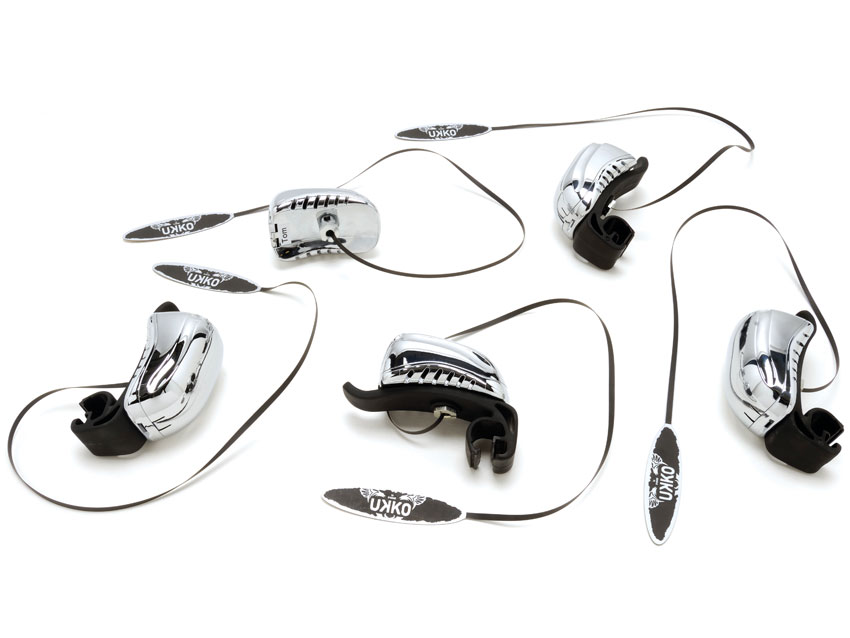MusicRadar Verdict
If you compare the system to its previous incarnation a few years ago, the preamps are much lighter in weight, so are much less likely to adversely affect the resonance of your drums. This also affords the UKKO mics a much cheaper price tag - something we all gain from. Highly recommended.
Pros
- +
Attractive chrome casing. Affordable. An extremely well-thought-out mic set.
Cons
- -
Snare mic doesn't quite cut it, but that shouldn't put you off.
MusicRadar's got your back
There are currently several inexpensive drum microphone sets on the market, many of which offer a budget-friendly option for us drummers. However, as with all open-miked set-ups, each microphone will inevitably pick up the sound of the adjacent drum as it is hit, which leads to a big bag of arse-ache in the form of audio gates and a land of technical hurdles only the likes of Mark Ronson can contend with.
The alternative is to get yourself some internal microphones, thus picking up only the sound of the drum being hit and so eliminating the need for a degree in nob-twiddling.
These come with their own problems, though. Quite often, internal drum miking systems are large, clunky beasts. Leaving a system mounted to the shells is less than appropriate for long travel and brackets often loosen in transit, or worse - during a gig. This is where B-Band step in.
"Don't let the deceptively thin transducers fool you - they really need to be heard to be believed"
Build
The UKKO contact mics are made up of two core components: a thin, flexible adhesive transducer strip and a lightweight preamp, incorporating an XLR connection. Housed beneath the cover of each preamp are two small switches that, when the system is in use, will give a mid-boost of 3dB at 500Hz, or a 6dB high cut.
Connection of a unit to a drum is simply a case of removing either head and sticking the transducer strip inside the drum at the edge of the shell, below the batter head. The length of connecting strip is then fed through the airhole, whereby it is connected to the preamp, which can either be mounted directly to the airhole, or to the rim of the drum, utilising the supplied rubber clamp.
All that's left then is to connect each unit to a mixer or recording interface, via an XLR lead. No modification of your kit is needed and the whole set-up can be kept on your drums permanently, making it an absolutely hassle-free solution.
Want all the hottest music and gear news, reviews, deals, features and more, direct to your inbox? Sign up here.
Hands on
To use the UKKO system, you will need 48v phantom power. Most decent mixers offer this as standard, as do most larger XLR-based audio interfaces. As with the nature of internal drum mic'ing systems, you will also need to use regular overhead mics to pick up the ambient sound of the kit, otherwise your cymbals simply won't be heard.
Once set up, the quality of signal from B-Band's UKKO system is nothing short of bewildering. Even the bass drum, which you'd assume would need a larger diaphragm microphone to pick up the lower frequencies, somehow sounds impressive and the tom mics offer an impressively crisp, clear punch.
Our only qualm with the system is the snare sound. Because of the mic's placement within the drum, the snare wires situated outside the drum aren't adequately picked up. However, to be fair to B-Band, this is more a product of the physicality of a snare and the nature of internal mics than of the UKKO system itself.
- Capture the perfect take with the best drum mic kits
